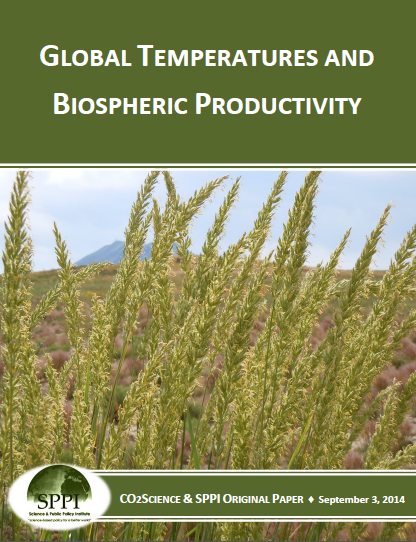News / Science & Technology
GLOBAL TEMPERATURES AND BIOSPHERIC PRODUCTIVITY

Among the many climate-alarmist fears of CO2-induced global warming is the concern that the productivity of the biosphere will decline if global temperatures rise to the extent predicted by computer models. Yet, for many alarmists, the future is the present. Since 1980, for example, the Earth has weathered three of the warmest decades in the instrumental temperature record, a handful of intense and persistent El Niño events, large-scale deforestation, "unprecedented" forest fires, and the eruption of several volcanoes. Concurrently, the air's CO2 content increased by 16%, while human population grew by 55%. So just how bad is the biosphere suffering in response to these much-feared events? Or, is it even suffering at all?
In the following summary, we explore the findings of several research groups that have set out to answer such questions, specifically focusing on the time period of the past few decades for the Earth as a whole. For according to the alarmists, if there ever was a time in which the biosphere should be showing signs of distress, it most certainly would be the recent past.
We begin with the study of Reichenau and Esser (2003)1, who investigated the individual influences of ENSO, volcanic eruptions and the North Atlantic Oscillation (NAO) on the 1958-1994 time series of anomalous CO2 fluxes with the help of the High Resolution Biosphere Model of Esser et al. (1994) and real-world CO2 measurements. Although the two researchers could conclude nothing about the NAO, other than to say "the influence of the NAO remain[s] unclear," they were able to determine that periods of anomalous rising atmospheric CO2 concentrations coincided with El Niño periods, while periods of anomalous declining atmospheric CO2 concentrations coincided with periods of significant volcanism.
